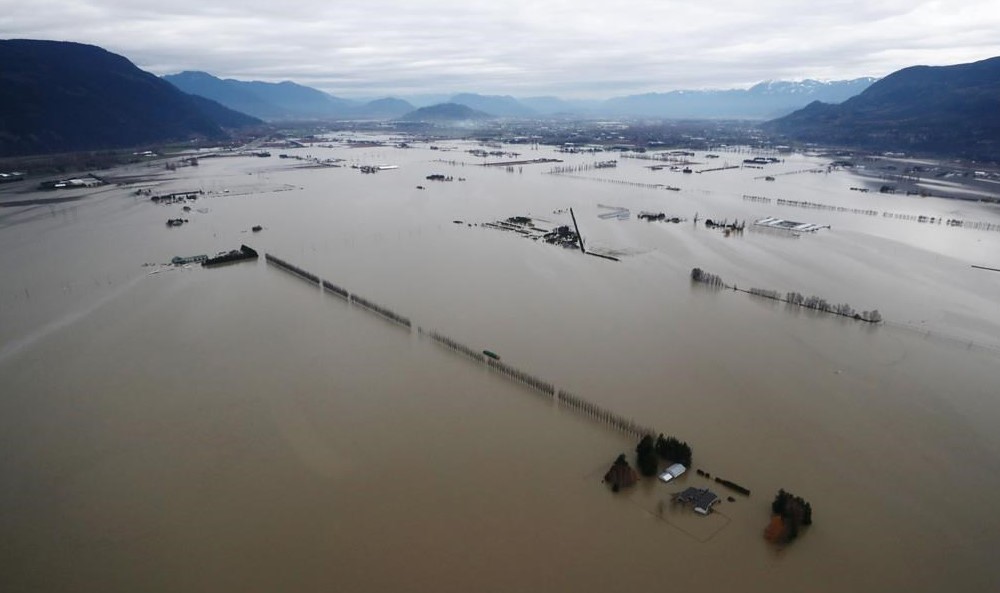
The City of Abbotsford says a recent study out of UBC, which suggested it would be less expensive to turn Sumas Prairie into a lake than to pursue other flood mitigations, isn’t accurate.
The city had engineering firm KWL Associates take a look at the study, which found the costs were “grossly underrepresented.”
In November 2021, an atmospheric river event in the Sumas River area near Abbotsford caused devastating flooding that destroyed homes, submerged fields and crops, and left many farmers with nothing.
Two weeks ago, Tara Martin, professor of conservation sciences and lead author of the study, told CityNews that all climate projections suggest that atmospheric river events like that are only going to get worse in the future.
Restoring Sumas Lake would involve buying up existing homes along the lakebed, which would be a cheaper option than reinforcing dykes and replacing a nearby pump station, she says.
“Those properties, at current assessed values, are around just under $1 billion,” she said. “When we compare that amount to what is currently being requested for rebuilding of dikes, new dikes, and repairing pump stations, and adding a pump station, that cost is up to $2.4 billion.
“So straight away, we know that this potential option — called ‘managed retreat,’ moving people and infrastructure out of harm’s way — is potentially an economically viable path that should be on the table for discussion.”
Martin says this option is also the most ecologically responsible solution for flood management in the region.
The Mayor of Abbotsford, Ross Siemens, told CityNews that when residents of the Sumas Prairie first heard about the UBC study, they “were a little shocked and quite concerned.”
“This is people’s homes, livelihoods, and food security. So I think the big challenge to them, with the [study], was that the undervaluation of the land — not even taking into consideration the amount of infrastructure, critical infrastructure for the province that goes through there. And I guess they were quite dismayed that that hadn’t even been part of the equation,” said Siemens.
He said his city had already examined the possibility of restoring the lake years ago, and, as part of its long-term flood mitigation plan, decided against it.
Siemens identified the province’s dependency on food production coming from the Sumas Prairie as a major reason to maintain it.
“Where would we even find arable land that yields those types of crops in British Columbia? So we’ve looked at all aspects, and that’s why our long-term flood mitigation plan has been approved. And why we’re moving forward for funding opportunities, and one of the reasons why the province has given us the Barrowtown flood resiliency is so that we can ensure that that lake bottom continues to be pumped.”
In February, the B.C. government announced it was putting up nearly $80 million to upgrade Abbotsford’s Barrowtown Pump Station in an effort to protect the Fraser Valley from future floods.
KWL argued that the UBC study didn’t account for the fluctuation in land values, adding that it cited assessed values from 2020.
The associates also said the study also failed to account for flood mitigation that would still be needed if Sumas Prairie was made a lake once again.
“[Restoration of the lake] would create a whole host of challenges on the west side of the prairie. And then the critical infrastructure of the freeway, some of the developments that First Nations have done on some of their lands in that area—all of that is susceptible to major challenges continuing, and it would only be exasperated if that were to happen,” said Siemens.
—With files from Cole Schisler and The Canadian Press.